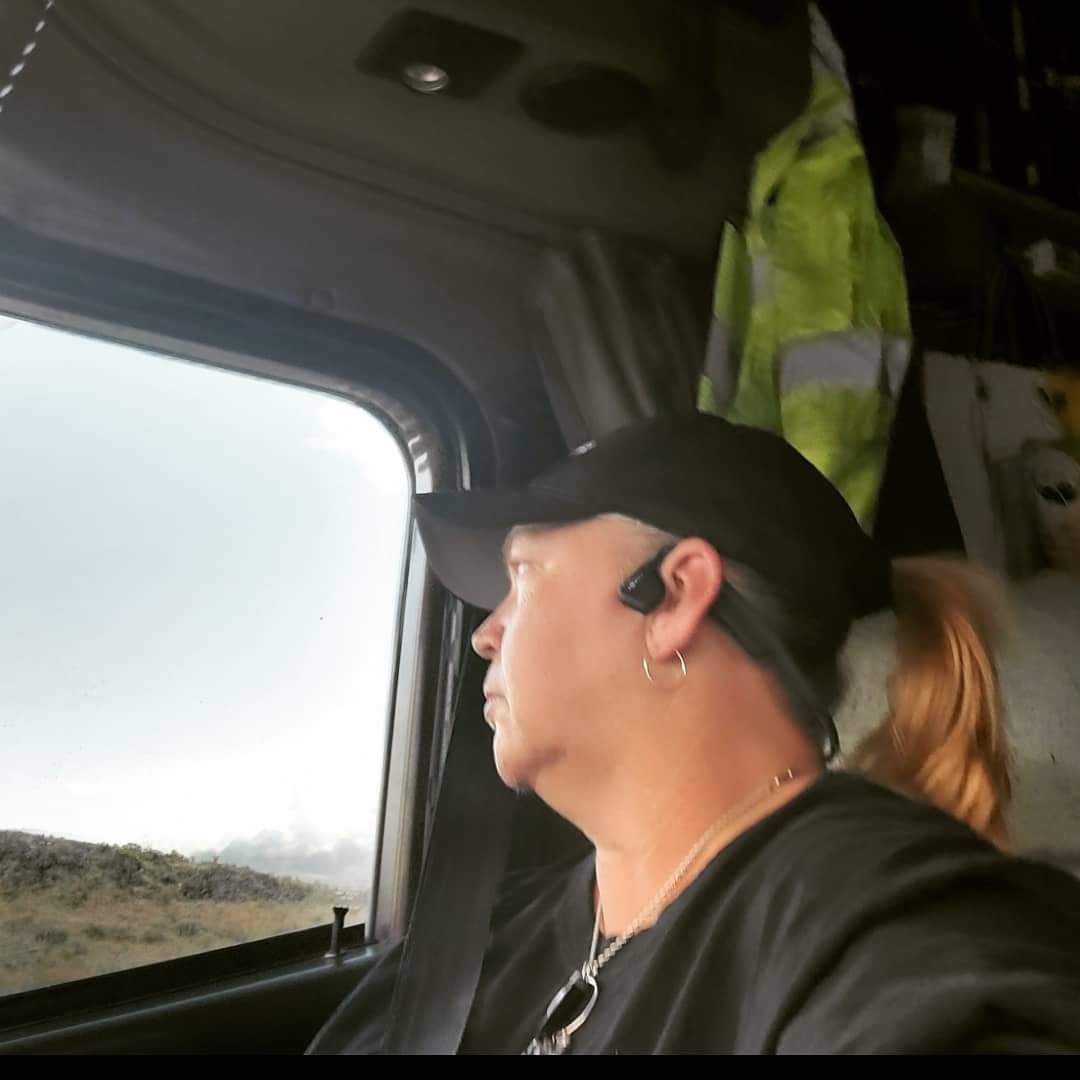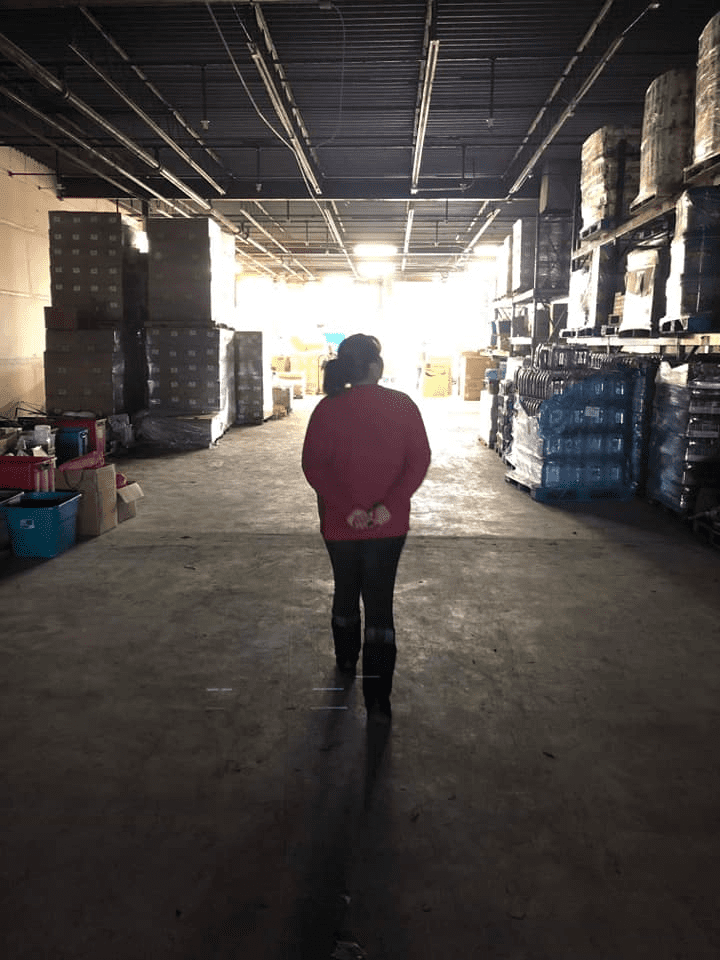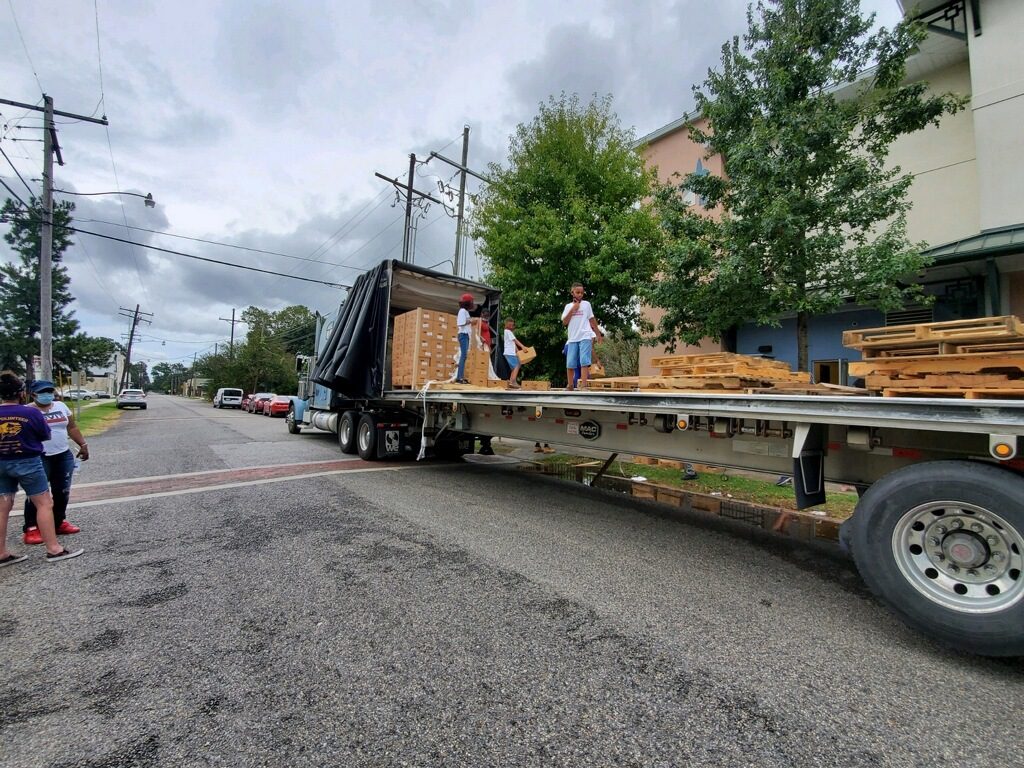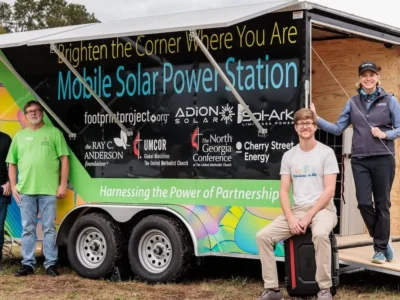Drivers hauling hope, one truckload at a time — that’s what Trucks with Room to Spare has been doing since Shelli Conaway launched the Kentucky-based nonprofit in 2018. Since then, the group has delivered crucial supplies in the aftermath of hurricanes, floods, tornadoes and fires –there’s nowhere this fleet won’t go. It’s a smart operation, packing trucks already on the route to disaster sites to maximum capacity with vital supplies, saving lives and saving energy while they’re at it. We caught up with Conaway as she was loading a trailer and handling dispatch operations for Hurricane Laura relief. Here’s our conversation from the road, edited for concision.

How did Trucks with Room to Spare get started?
It was Hurricane Michael. I was in Houston, and I had a shipment that was going to Tampa. Of course I had to sit and wait for the storm to pass. While I’m waiting I’m noticing on social media that all these people have needs — water, food, and I’ve got some money, and I’ve got some room on my trailer. So, I hit every truck stop that I could find between Houston and Florida, I bought every case of water I could find. I loaded it on the trailer and strapped it down on the flatbed. They met me on the side of the interstate, I handed it off, and I thought you know, I’m sure there are more trucks coming through. They can do the same thing. So we started a Facebook group trying to match truckers with people that had needs. And it kind of blew up from there.
That’s so powerful. Who’s on the team and how do you keep it all organized?
We’re all trucking industry people, most of us are drivers. We’ve got Shelle Lichti, she’s also president of an organization called LGBT Truckers. Shelle’s our director of operations. She’s my sounding board — when she’s had a bad day she yells at me, and when I’ve had a bad day I yell at her. Lisa and Lee Schmitt handle our agriculture part. They have all the connections for people that haul hay and stuff like that, that we can haul into disaster areas. I have an intern, Elaine Collins, that helps with our Facebook and Instagram. Dave McCauley is our vice president. He does things in the background to help pick us up more sponsors to help pay for our fuel. We donate our services, but these trucks don’t run on love. So we do a lot of fundraising. And then we have Colleen Goodrich and Cheryl Pollard also on our board. They help with the back office stuff and keeping my head on straight. We’re all truck drivers except for Elaine.
Most of the people you mentioned are women, that’s maybe not what people on the outside of the industry would expect. Could you talk about being a woman in trucking?
When I first started back in the late 80s there weren’t a whole lot of us out here. The women that were out here were mostly driving with their husbands. I started out driving by myself, I’ve always been a solo driver, and the industry has come a long way, it really has for women. There’s a lot more respect, but just like in anything, respect is earned. Most of the men out here feel if you can do the job, then you deserve to be out here. As in anything that there’s an emotional attachment to, women are drawn to that, more so than men. So it kind of makes sense that a lot of the people that are into disaster relief are female. There is an emotional attachment to the disaster.

That’s a great point. How active is the organization? How often are you out on a relief effort?
Anytime there is a disaster, we’re available. We’ve worked through COVID, helping to transport hand sanitizer and masks, distributing masks to other truck drivers. Because while everybody at home is able to go to the store and buy this stuff, we truck drivers, we don’t have that luxury. We had a harder time getting the PPE that was needed to protect us. So we organized and worked with that. We worked the fires. We’ve got a shipment that’s going to be coming up here in a couple of weeks to support the fires in Colorado. We supported the flooding in the Midwest, the flooding in Michigan. Anytime there’s something going on and there’s something that needs to be moved, we try to do it.
What’s the current status down in Louisiana where you’re heading?
The photos and the updates that I’m getting, it’s bad. We desperately need more trucks. We need donations. If there are companies out there that can donate food, cleaning supplies, tarps ice — ice is a major need for these people. We need drivers to help transport it. We need drivers and pickup trucks and trailers too because some of these areas they can still only access with four wheelers.
How can people get involved?
They can go to truckswithroomtospare.org and they’re welcome to donate there. Or find us on Facebook. If they’re interested in helping out, they’re more than welcome to send in a comment on our website or they can give us a call at 866-303-0388.
Let’s shift gears for a moment. For you, what’s the best part of being a truck driver?
I don’t have a boss standing over me. I really don’t like the idea of being in a cubicle. I have a degree in human resources, I was a director of human resources for a defense contractor for a little while and I just didn’t like being closed in. Out here, it’s a new thing every day. I like learning and things being different.
What’s your one word — one word to describe you or just a word that you keep in your mind as a sort of intention?
It would have to be two words — ‘controlled chaos.’ I have a lot of irons in the fire. I work for a small husband and wife owner-operator, out of Richland, Indiana. I run every day, five days a week, sometimes on weekends. I still do this from the cab and he’s constantly looking at me going, ‘Why do you do this? People don’t appreciate it.’ And I’m like ‘I do it, because that’s what I do.’ And he goes, ‘Yeah, but I’m seeing you on Facebook at midnight when you should be asleep’ and I’m like, ‘Well somebody needed something!’ I like being in the middle of things. I’ve always been the type of person if I see a problem, I try to figure out how to fix it. I guess it’s just another challenge I’m looking to tackle.
It’s a really impactful challenge. What would you suggest to anyone wanting to get out on the road and become a truck driver?
Check out your driver training school, if you’re going to go to school, and realize you’re not going to learn everything that you need to know there. Listen to the old timers. I know a lot of us, we rattle on about the good old days, but you can get a lot of good information and things that will help you on the road, by listening to the people that have been out here for a long time doing it. I still learn every day by listening to people and I’ve been out here over almost 30 years.





 Copyright
2024
Root and Vine
Copyright
2024
Root and Vine